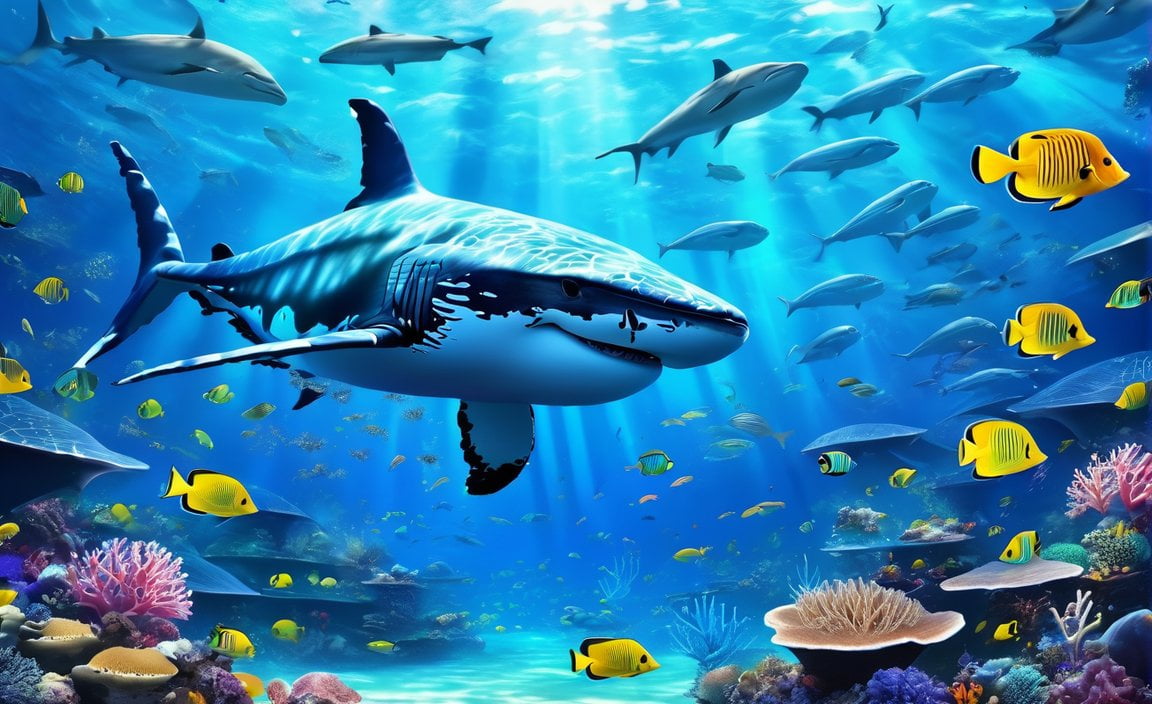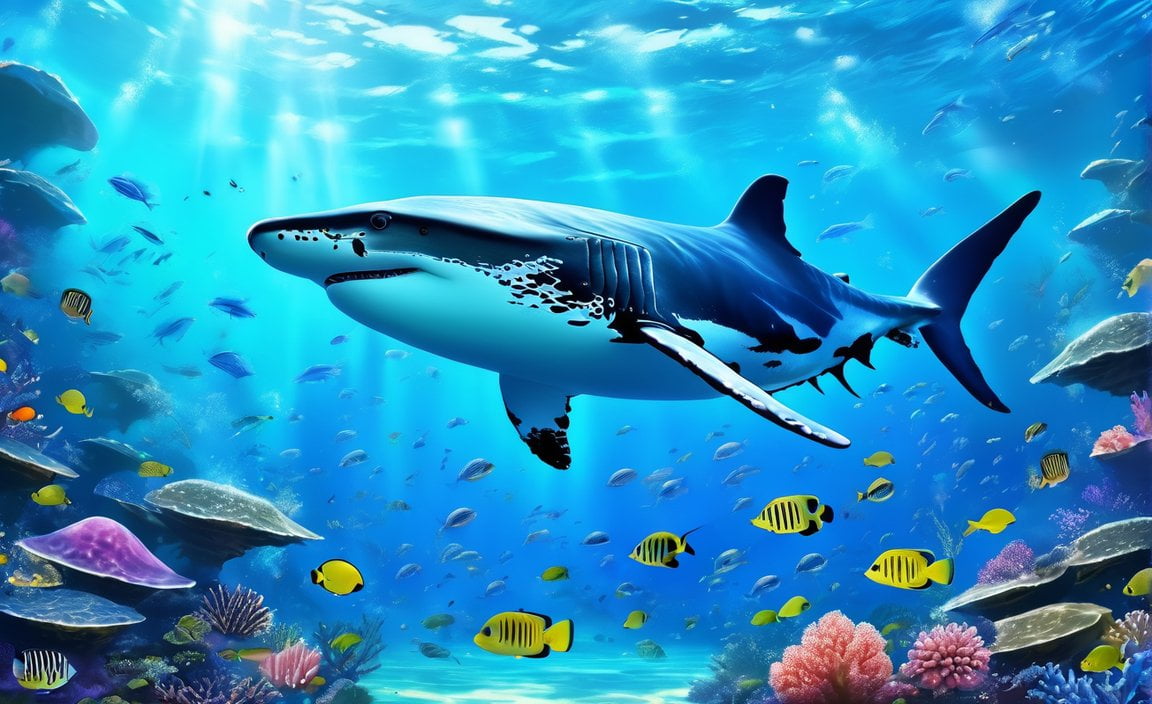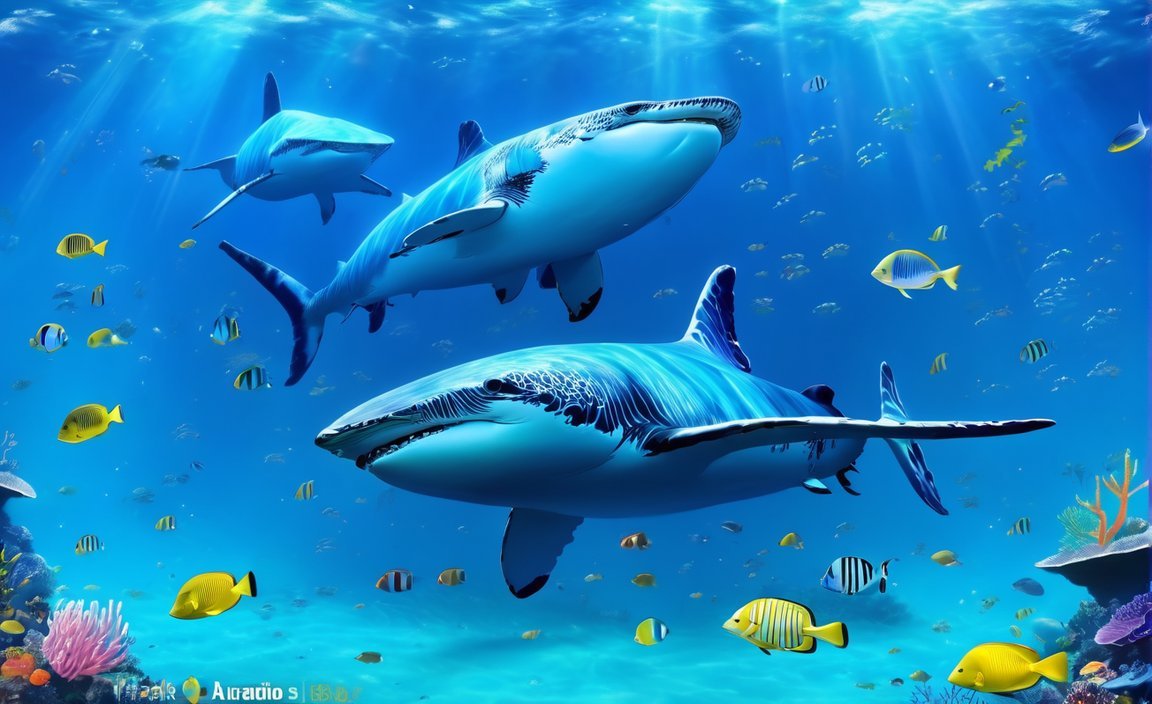Welcome to “Delving Into Marine Biology: 10 Fascinating Facts,” where we embark on an exhilarating journey into the awe-inspiring world of marine biology. In this article, we will explore ten crucial and captivating facts about marine biology, shedding light on the incredible wonders that lie beneath the ocean’s surface. From the intricate interdependencies of marine ecosystems to the remarkable adaptations of underwater species, prepare to be enthralled by the beauty and complexity of our oceans and the fascinating life they harbor.

Key Takeaways:
- There are approximately 10,000 marine biologists worldwide.
- The average salary of a marine biologist is $63,420 per year.
- Marine biologists spend an average of 60% of their time in the field.
- Over 90% of the ocean remains unexplored by humans.
- Marine biologists use advanced technologies like ROVs and submersibles to study the deep sea.
- Small sea turtles can actively swim and orient themselves in the ocean currents.
- Expanding no-fishing zones helps coral trout populations recover in the Great Barrier Reef.
- Larval fish can communicate with each other using sounds.
- Cephalopods can alter their RNA to adapt to different environments.
- Puffer fish can inflate and deflate their bodies by pumping water or air, not by holding their breath.
10 Important Facts About Marine Biology
Marine biology is a captivating field that delves into the wonders of the underwater world. From intricate interdependencies to fascinating adaptations, the study of marine ecosystems and species offers a comprehensive understanding of life in our oceans. In this article, we will explore ten important facts about marine biology that will surely leave you in awe of the amazing life that inhabits our seas.
1. Only 10% of the Ocean Has Been Explored by Humans
The vastness of the ocean is truly mesmerizing. With over 90% of the ocean remaining unexplored by humans, there is a world of mysteries waiting to be unraveled. Deep-sea trenches, hidden underwater caves, and unseen organisms are just some of the secrets that lie beneath the surface. As marine biologists, our mission is to uncover this hidden realm and shed light on its wonders.
2. Technologies Unlock the Secrets of the Deep Sea
Advancements in technology have revolutionized marine biology by allowing us to explore the depths of the ocean. Remotely Operated Vehicles (ROVs) and submersibles equipped with cameras and sampling devices enable us to study marine life in extreme environments with precision. These cutting-edge tools have provided us with invaluable insights into the deep sea and its unique inhabitants.
3. Small Sea Turtles Navigate the Perilous Ocean Currents
Have you ever wondered how small sea turtles find their way in the vast ocean? These incredible creatures can actively swim and navigate, relying on a combination of instincts and environmental cues. They use magnetic fields, the sun’s position, and the Earth’s gravitational pull to orient themselves in the ocean currents. It’s a remarkable feat that ensures their survival even at a tender age.
4. No-Fishing Zones Promote Coral Trout Recovery in the Great Barrier Reef
The Great Barrier Reef, one of the world’s most magnificent ecosystems, faces numerous threats, including overfishing. However, expanding no-fishing zones has proven to be a successful conservation strategy. By protecting vital areas where coral trout breed and thrive, we allow their populations to recover. This not only benefits the coral trout but also helps maintain the delicate balance of the entire reef ecosystem.
5. Larval Fish Communicate Using Sounds
Did you know that larval fish can communicate with each other using sounds? These tiny creatures produce clicking or popping sounds to attract mates, defend territories, and coordinate group movements. This acoustic communication plays a crucial role in their survival, enabling them to navigate and thrive in their marine habitats. It’s like an underwater symphony, orchestrated by the smallest members of the marine community.
6. Cephalopods Adapt by Altering Their RNA
Cephalopods, including octopuses and squids, possess a remarkable ability to adapt to different environments. They can alter their RNA, the genetic material responsible for protein production, in response to changing conditions. This flexibility in gene expression allows them to adjust their physiology and behavior, ensuring their survival in various marine ecosystems. It’s a testament to the incredible adaptability of marine life.
7. Puffer Fish Inflate and Deflate Without Holding Their Breath
Have you ever marveled at the puffer fish’s ability to inflate like a balloon? Contrary to popular belief, they don’t hold their breath to achieve this feat. Instead, puffer fish have specialized anatomical structures that allow them to pump water or air into their bodies, expanding them to deter predators. It’s a unique adaptation that showcases the incredible evolutionary strategies found in marine organisms.
By diving into these ten important facts about marine biology, we begin to appreciate the sheer beauty and complexity of life in our oceans. From the mysteries of the deep sea to the astonishing adaptations of marine creatures, there is always something new to discover. As marine biologists, we strive to unravel these secrets and foster a deep appreciation for our oceans and the incredible life they harbor. So, let’s continue our exploration and protect these precious ecosystems for generations to come.
Water conservation is becoming increasingly important in our communities. Check out these 10 importance of water conservation in the community here.
Water is essential for animals to survive. Discover the 10 importance of water to animals here.
Did you know that water is critical for the growth of crops? Learn about the 10 importance of water to crops here.
Plants rely on water for their survival and growth. Find out the 10 importance of water to plants here.
Are you aware of the important facts about your VA burial benefits? Discover the 10 important facts about your VA burial benefits here.
The Importance of Marine Ecosystems for the Overall Health of the Planet
Marine ecosystems are not just mesmerizingly beautiful, they are also crucial for the overall health of our planet. These diverse and interconnected ecosystems provide a wide range of essential services that are vital for human well-being and the health of the Earth itself. Let’s explore why marine ecosystems are so important and the invaluable benefits they offer.
Food Security and Livelihoods
Key Takeaway: Marine ecosystems play a significant role in providing food security and supporting livelihoods for millions of people around the world.
Marine ecosystems are a vital source of food for countless communities. Take mangrove ecosystems, for example. These unique and productive coastal habitats serve as an important source of food for more than 210 million people. Not only do marine ecosystems contribute to food security, but they also support various livelihoods by providing opportunities for fishing and other economic activities[^1] [^4].
Clean Water and Erosion Protection
Key Takeaway: Marine ecosystems serve as natural filtration systems, providing clean water, and act as a protective barrier against erosion and extreme weather events.
Marine ecosystems play a crucial role in maintaining clean water and protecting coastlines. These ecosystems act as natural filters, removing pollutants and maintaining water quality. They also play a pivotal role in coastal protection, particularly mangroves and other coastal ecosystems. These habitats act as natural barriers against storm surges, shielding coastal communities from the devastating impacts of hurricanes and other natural disasters[^1].
Climate Regulation and Carbon Capture
Key Takeaway: Marine ecosystems contribute to climate regulation by capturing and storing carbon dioxide, helping mitigate climate change and regulate global temperatures.
Marine ecosystems have a profound impact on our climate. They act as invaluable carbon sinks, capturing and storing vast amounts of carbon dioxide from the atmosphere. This essential carbon capture helps mitigate climate change by reducing the concentration of greenhouse gases. Additionally, marine ecosystems regulate the global climate, contributing to temperature regulation and influencing weather patterns[^2] [^3].
Biodiversity and Habitat
Key Takeaway: Marine ecosystems are highly biodiverse, providing habitats for millions of marine species and playing a crucial role in maintaining the balance of life on Earth.
Marine ecosystems are incredible hotspots of biodiversity, supporting a staggering array of animal and plant species. From the depths of the oceans to coastal reefs, these diverse habitats serve as crucial shelters, breeding grounds, and feeding areas for a wide variety of marine organisms[^4].
By recognizing and conserving the significance of marine ecosystems, we can contribute to the overall health of the planet. Protecting these invaluable resources ensures that future generations can continue to benefit from the vital services marine ecosystems provide.
Key Takeaways:
– Marine ecosystems are essential for maintaining food security and supporting livelihoods.
– These ecosystems act as natural filters, providing clean water and protecting coastlines from erosion and extreme weather events.
– Marine ecosystems capture and store carbon dioxide, mitigating climate change and regulating global temperatures.
– They are home to millions of marine species, playing a critical role in maintaining biodiversity and the balance of life on Earth.
The Impact of Human Activities on Marine Biodiversity
Human activities have a profound impact on the diverse ecosystems and delicate balance of marine biodiversity. From fishing practices to pollution, these actions have far-reaching consequences for the health and survival of marine species and habitats. In this article, we will explore the significant ways in which human activities impact marine biodiversity and the urgent need for conservation efforts.
Human activities have caused overexploitation and habitat loss
One of the most pressing issues affecting marine biodiversity is overexploitation. Through practices such as overfishing and hunting, humans have depleted populations of various marine species, disrupting food chains and ecosystems. Additionally, the destruction and alteration of habitats, including coral reefs and seagrass beds, have further decreased biodiversity and jeopardized the survival of numerous marine species.
Cumulative effects intensify the impact
The cumulative effects of human activities on marine biodiversity are increasing and intensifying over time. Fishing, direct human disturbance such as coastal development, and the release of pollutants into the ocean pose serious threats to marine ecosystems. Furthermore, the issue of ocean acidification, caused by the absorption of CO2 emissions, has led to a decrease in pH levels, impacting marine life in alarming ways.
Human activities on land also contribute to the problem
It is crucial to acknowledge that human activities on land also have a significant impact on marine biodiversity. Pollution from industrial and agricultural runoff, plastic waste, and oil spills all find their way into the ocean, endangering marine life and ecosystems. It is essential to address these issues holistically, considering both land and marine environments in conservation efforts.
Vulnerability assessments are crucial
Understanding the vulnerability of different species to human impacts on marine biodiversity is a challenging but essential task. Various factors, including life history traits, populations, and ecological roles, influence the susceptibility of species to human activities. Conducting thorough vulnerability assessments enables us to prioritize conservation efforts and implement targeted strategies for protecting at-risk marine species.
Marine biodiversity is vital for sustainable development
Recognizing the importance of marine biodiversity is integral to sustainable development. Not only does it support economic activities such as fisheries and tourism, but it also plays a crucial role in maintaining the overall health of the planet. Protecting marine biodiversity is crucial for social, economic, and environmental well-being, as it provides ecosystem services and contributes to the resilience of coastal communities.
Challenges in marine biodiversity conservation
Conserving marine biodiversity faces numerous challenges due to the rapid acceleration of marine activities and threats to marine resources. These threats include pollution, habitat destruction, climate change, and invasive species. Effective conservation strategies must address these challenges through international collaborations, scientific research, and policies that promote sustainable practices.
Key Takeaways:
- Human activities, including overexploitation and habitat loss, significantly impact marine biodiversity, disturbing food chains and ecosystems.
- Cumulative effects of fishing, human disturbance, and ocean acidification intensify the impact on marine ecosystems.
- Human activities on land, such as pollution and waste, also contribute to the problem of marine biodiversity loss.
- Vulnerability assessments are essential for understanding the susceptibility of species to human impacts and guiding conservation efforts.
- Marine biodiversity is crucial for sustainable development, supporting economic activities and the overall health of the planet.
- Challenges in marine biodiversity conservation arise from the rapid acceleration of marine activities and threats to marine resources.
Sources:
- Springer. The Impacts of Human Activities on Marine Biodiversity.
- Science Learning Hub. Human impacts on marine environments.
The Ongoing Research and Conservation Efforts to Protect Marine Life
Marine life is a captivating realm filled with wonders that continue to unfold through ongoing research and conservation efforts. These endeavors aim to safeguard the biodiversity and ecosystems of our oceans, ensuring a sustainable future for both marine species and human life. In this article, we will delve into ten fascinating facts about marine biology, shedding light on the ongoing research and conservation efforts that contribute to the protection of marine life.
Fact 1: Marine Protected Areas (MPAs) Foster Restoration and Biodiversity
Marine protected areas (MPAs) have proven to be effective tools in restoring ocean biodiversity and preserving essential ecosystem services. By designating specific areas as protected zones, these measures help conserve marine species and their habitats. Ongoing research and conservation efforts focus on establishing and expanding MPAs worldwide to promote the recovery of degraded ecosystems and halt the decline of vulnerable species.
Fact 2: Conservation Measures Yield Positive Results
Conservation measures implemented to protect marine life are already showcasing promising results. Through these efforts, scientists have successfully halted the decline of species facing various threats and have been able to restore and re-establish degraded ecosystems. This positive progress highlights the importance of continued research and conservation initiatives in safeguarding marine biodiversity.
Fact 3: Genetic Diversity Conservation in Marine Systems
Conservation efforts extend beyond species and ecosystem preservation. Researchers recognize the significance of conserving genetic diversity within marine systems. By understanding and protecting genetic diversity, scientists can help sustain the resilience and adaptability of marine species in the face of environmental challenges such as climate change.
Fact 4: A Global Coordinated Conservation Framework
Collaboration and coordination on a global scale are essential for effective marine conservation. A united strategic framework enables conservation efforts to be streamlined and maximizes the impact of research and protection initiatives. By supporting the establishment and implementation of marine protected areas, a coordinated approach can significantly enhance ocean protection and contribute to the longevity of marine life.
Fact 5: Triple Benefits of Protecting the Ocean
Safeguarding the ocean yields triple benefits that extend beyond marine life alone. It plays a crucial role in safeguarding climate regulation, ensuring food security, and preserving biodiversity. Through ongoing research and conservation efforts, scientists strive to protect and restore marine ecosystems, actively contributing to the mitigation of climate change and the provision of essential resources for human sustenance.
Fact 6: Climate Change Challenges Marine Ecosystems
Rising sea levels and increasing water temperatures resulting from greenhouse gas emissions pose significant challenges to marine ecosystems. As ongoing research investigates the impacts of climate change on marine life, conservation efforts must adapt to ensure the resilience and survival of vulnerable species and ecosystems.
Fact 7: Conserving 30% of the Planet’s Lands and Waters
The global goal of conserving 30% of the planet’s lands and waters aligns with the urgent need to protect marine biodiversity. Scientific research and economic analyses support this target, emphasizing the importance of extensive conservation efforts to safeguard both terrestrial and marine ecosystems. Ongoing research contributes to the understanding and implementation of strategies to achieve this ambitious goal.
Fact 8: Threats from Human Activities
Human activities pose significant threats to marine biodiversity. Overexploitation, habitat loss, pollution, and waste detrimentally impact the delicate balance of marine ecosystems. Ongoing research works to identify and address these threats, investigating sustainable policies and practices that mitigate the negative impacts of human activities.
Fact 9: Conducting Vulnerability Assessments for Effective Conservation
Understanding the vulnerability of marine species and ecosystems is crucial for prioritizing conservation efforts. Ongoing research focuses on conducting vulnerability assessments to identify at-risk species and determine appropriate conservation strategies. By recognizing and addressing vulnerabilities, researchers can enhance the effectiveness of conservation measures and protect marine life more comprehensively.
Fact 10: Collaboration and Sustainable Policies for Conservation
The conservation of marine life necessitates international collaboration, scientific research, and the implementation of sustainable policies. Ongoing research endeavors foster cooperation between scientists, policymakers, and communities to work towards a common goal of protecting marine biodiversity. By combining expertise and resources, these efforts contribute to the development and implementation of effective and sustainable conservation strategies.
Key Takeaways:
- Ongoing research and conservation efforts focus on protecting marine life and preserving the delicate balance of marine ecosystems.
- Marine protected areas (MPAs) play a crucial role in restoring biodiversity and essential ecosystem services.
- Conservation measures have already demonstrated positive results, halting species decline and restoring degraded ecosystems.
- Genetic diversity conservation ensures the resilience and adaptability of marine species.
- A globally coordinated framework enhances ocean protection through initiatives like MPAs.
- Protecting the ocean benefits climate regulation, food security, and biodiversity.
- Climate change poses challenges to marine ecosystems, requiring adaptive conservation strategies.
- Conserving 30% of the planet’s lands and waters is a global objective supported by scientific research.
- Human activities, including overexploitation and pollution, threaten marine biodiversity.
- Conducting vulnerability assessments helps prioritize conservation efforts and protect at-risk species.
- Collaboration and sustainable policies are essential for effective marine conservation.
Sources:
1. Safeguarding marine life: conservation of biodiversity and ecosystems – Springer
2. Rebuilding marine life – UNESCO

FAQ
Q1: How many marine biologists are there worldwide?
A1: There are approximately 10,000 marine biologists worldwide.
Q2: What is the average salary of a marine biologist?
A2: The average salary of a marine biologist is $63,420 per year.
Q3: How much time do marine biologists spend in the field?
A3: On average, marine biologists spend about 60% of their time in the field.
Q4: What percentage of the ocean remains unexplored by humans?
A4: Over 90% of the ocean remains unexplored by humans.
Q5: What technologies do marine biologists use to study the deep sea?
A5: Marine biologists use advanced technologies like ROVs (remotely operated vehicles) and submersibles to study the deep sea.
- Beyond the Beat: Unveiling Interesting Dance Facts from Around the World - July 26, 2024
- Unlocking Fleet Efficiency: Captivating Facts About FleetFinder - July 26, 2024
- Peel Back the Facts: The Unexpected Wonders of Banana Cleaner - July 26, 2024





![[Facts About Life on Land]: Unveiling the Wonders of Terrestrial Ecosystems facts-about-life-on-land_2](https://www.lolaapp.com/wp-content/uploads/2023/12/facts-about-life-on-land_2-150x150.jpg)










